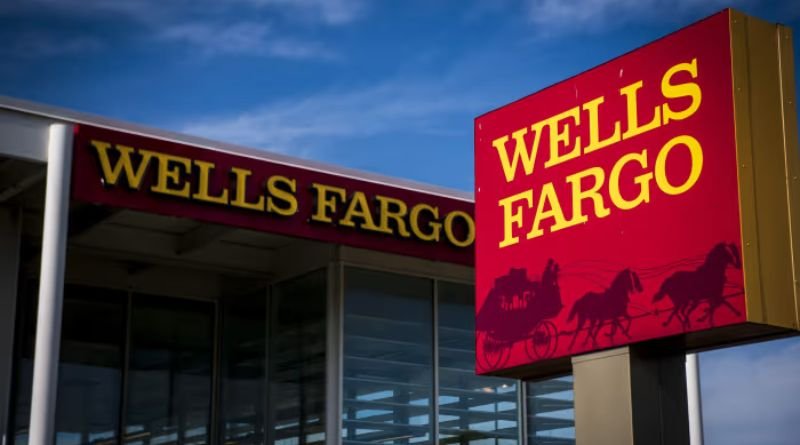Wells Fargo is one of the largest financial institutions in the United States, with a rich history dating back to 1852. However, in recent years, the bank has been at the center of several high-profile scandals that have shaken its reputation. Among these, the Wells Fargo Ponzi scheme controversy stands out as one of the most notable financial scandals to affect the institution. This article explores the key details of the scandal, its impact on customers, and the repercussions for the bank.
Table of Contents
What is a Ponzi Scheme?
Before delving into the Wells Fargo Ponzi scheme, it’s important to understand what a Ponzi scheme is. A Ponzi scheme is a type of investment fraud where returns to earlier investors are paid using the capital of newer investors, rather than from profits earned by legitimate investments. The scheme relies on a constant influx of new investors to provide returns, and it collapses when the flow of new money slows down or stops entirely.
Although Wells Fargo was not involved in a traditional Ponzi scheme in the strictest sense, the term has been used by some media outlets and commentators to describe the bank’s unethical practices in manipulating customer accounts and inflating profits.
The Wells Fargo Scandal: Falsifying Accounts
The Wells Fargo scandal, which came to light in 2016, involved the creation of millions of fake accounts without customers’ knowledge or consent. This was not a Ponzi scheme in the traditional sense, but the bank’s actions were fraudulent and involved deceptive practices aimed at inflating account numbers and, consequently, profits.
1. The Fake Accounts Scandal
The most significant part of the scandal was the discovery that Wells Fargo employees had opened unauthorized checking and credit card accounts for customers to meet aggressive sales targets. Employees were pressured to cross-sell products to existing customers, often opening accounts without their knowledge or consent.
Between 2011 and 2015, it was reported that over 2 million fake accounts were opened. Customers were charged fees for accounts they didn’t ask for, and many were unaware of the fraud until it was uncovered. This breach of trust and manipulation of accounts was a severe violation of banking ethics and laws.
2. The Scheme’s Structure
While the Wells Fargo scandal was not a Ponzi scheme in the traditional sense, it shares some common elements with Ponzi-style fraud. The fake accounts served a dual purpose: they allowed the bank to inflate its customer base, thus giving the illusion of success, and they enabled employees to earn bonuses and commissions by creating fake products. The company’s upper management, it was later revealed, had created a culture that prioritized short-term sales goals over ethical business practices, which fostered an environment ripe for fraudulent activities.
Employees involved in the scheme were pressured to hit quotas for opening accounts and selling products, and some used deceptive tactics to meet those targets. For example, many customers had accounts opened without their permission or knowledge. Some customers were even charged fees for accounts they never authorized.
3. Impact on Customers
The fallout from the fake accounts scandal was significant for Wells Fargo’s customers. Many customers were unaware that accounts had been opened in their names, and some were subjected to fees for services they did not use. In some cases, unauthorized credit cards were opened, affecting customers’ credit scores and potentially damaging their financial standing.
Customers who discovered the fraudulent accounts often had to go through a lengthy process to resolve the issue, including disputing the charges, closing accounts, and dealing with the damage done to their credit reports. This led to a loss of trust in Wells Fargo, with many customers questioning the integrity of the bank and its commitment to protecting their financial interests.
4. The Role of Management
The scandal raised serious questions about the role of Wells Fargo’s management. While the company initially blamed the issue on lower-level employees, investigations revealed that the fraudulent practices were encouraged, and in some cases, even directed, by senior management. The pressure to meet sales targets and increase profits created a toxic corporate culture that incentivized unethical behavior.
In response to the scandal, several top executives were forced to resign, including the CEO at the time, John Stumpf. Wells Fargo also faced significant regulatory scrutiny and was fined heavily for its actions. The U.S. Consumer Financial Protection Bureau (CFPB) fined Wells Fargo $185 million in 2016, marking one of the largest penalties ever levied against a financial institution.
Consequences for Wells Fargo
The Wells Fargo scandal had far-reaching consequences for the bank and the financial industry at large.
1. Legal and Regulatory Actions
In addition to the $185 million fine, Wells Fargo faced numerous lawsuits from customers, investors, and regulatory agencies. The U.S. Department of Justice also opened investigations into the company’s practices, which led to further penalties and legal settlements.
The bank was also forced to pay back millions of dollars in fees that had been charged to customers due to the fraudulent accounts. As of 2021, Wells Fargo had spent over $3 billion in penalties and legal fees related to the scandal.
2. Loss of Trust
The fallout from the scandal damaged Wells Fargo’s reputation and led to a significant loss of customer trust. Many customers who had been affected by the fake accounts took their business elsewhere, and the bank faced a wave of negative media coverage. In the years following the scandal, Wells Fargo made efforts to repair its image by focusing on customer satisfaction and implementing new compliance measures. However, it has been an uphill battle to regain the trust of both customers and regulators.
3. Corporate Reforms
In response to the scandal, Wells Fargo took steps to reform its internal practices. The bank revamped its sales practices, eliminated sales goals for retail bankers, and implemented more stringent oversight and compliance measures. Additionally, Wells Fargo pledged to invest in customer restitution programs to compensate customers who were harmed by the fake accounts.
Despite these efforts, Wells Fargo’s efforts to rehabilitate its image have been met with mixed results. While the bank has made strides in rebuilding its compliance and governance structures, the damage to its reputation lingers.
Is Wells Fargo a Ponzi Scheme?
While the Wells Fargo scandal involved fraudulent practices and deceptive behavior that share some characteristics of a Ponzi scheme, it is not technically a Ponzi scheme. The fraud involved the creation of fake accounts rather than the misallocation of funds to investors, which is the hallmark of a traditional Ponzi scheme. However, the term “Ponzi scheme” has been used in media and public discourse to describe the way Wells Fargo’s management created a facade of success through unethical practices, much like a Ponzi operator creates the illusion of profitability through deceit.
FAQs about the Wells Fargo Ponzi Scheme Controversy
1. What is a Ponzi scheme?
A Ponzi scheme is a fraudulent investment scheme where returns are paid to earlier investors using the capital of newer investors, rather than from legitimate profits. Eventually, the scheme collapses when new investors stop joining, and the operator is unable to pay returns to all participants.
2. Did Wells Fargo run a Ponzi scheme?
While Wells Fargo did not run a traditional Ponzi scheme, its fraudulent account practices have been compared to such schemes due to the deceptive nature of its actions and the reliance on inflating account numbers to generate profits.
3. How did Wells Fargo’s fake accounts scandal unfold?
Between 2011 and 2015, Wells Fargo employees opened millions of unauthorized accounts to meet aggressive sales quotas. These fake accounts resulted in fees being charged to customers, damaging their financial standing and leading to legal and regulatory action.
4. What penalties did Wells Fargo face for the fake accounts scandal?
Wells Fargo was fined $185 million in 2016 by the Consumer Financial Protection Bureau (CFPB). The bank also faced lawsuits, further fines, and had to spend billions in legal fees and customer restitution.
5. How has Wells Fargo responded to the scandal?
Wells Fargo has implemented reforms to improve its sales practices, eliminate sales quotas for retail bankers, and improve oversight. The bank has also taken steps to compensate customers who were harmed by the fraudulent accounts.
6. What impact did the Wells Fargo scandal have on the bank’s reputation?
The scandal significantly damaged Wells Fargo’s reputation, leading to a loss of customer trust and a decline in business. The bank has struggled to regain public confidence despite efforts at reform.
Conclusion
The Wells Fargo Ponzi scheme scandal, though not a traditional Ponzi scheme, was a major financial scandal that exposed deep flaws in the bank’s culture and operations. The creation of fake accounts led to widespread harm to customers and resulted in significant legal, financial, and reputational damage to Wells Fargo. While the bank has made efforts to recover and reform its practices, the legacy of the scandal remains a cautionary tale about the dangers of prioritizing profits over ethical behavior in corporate culture.






